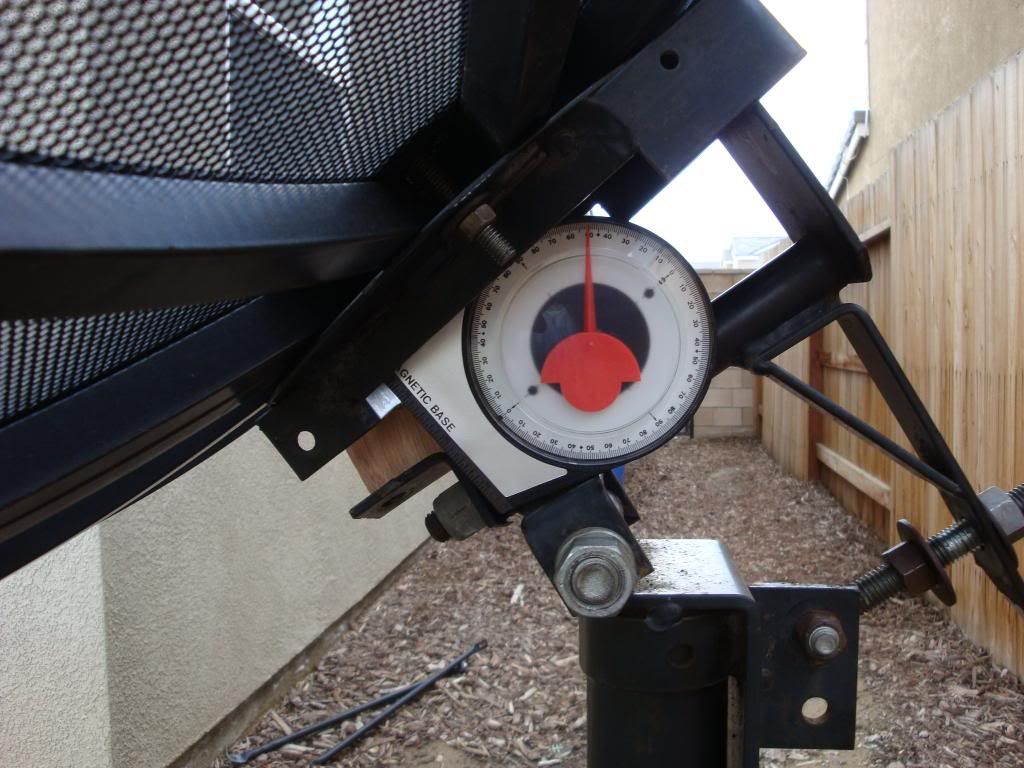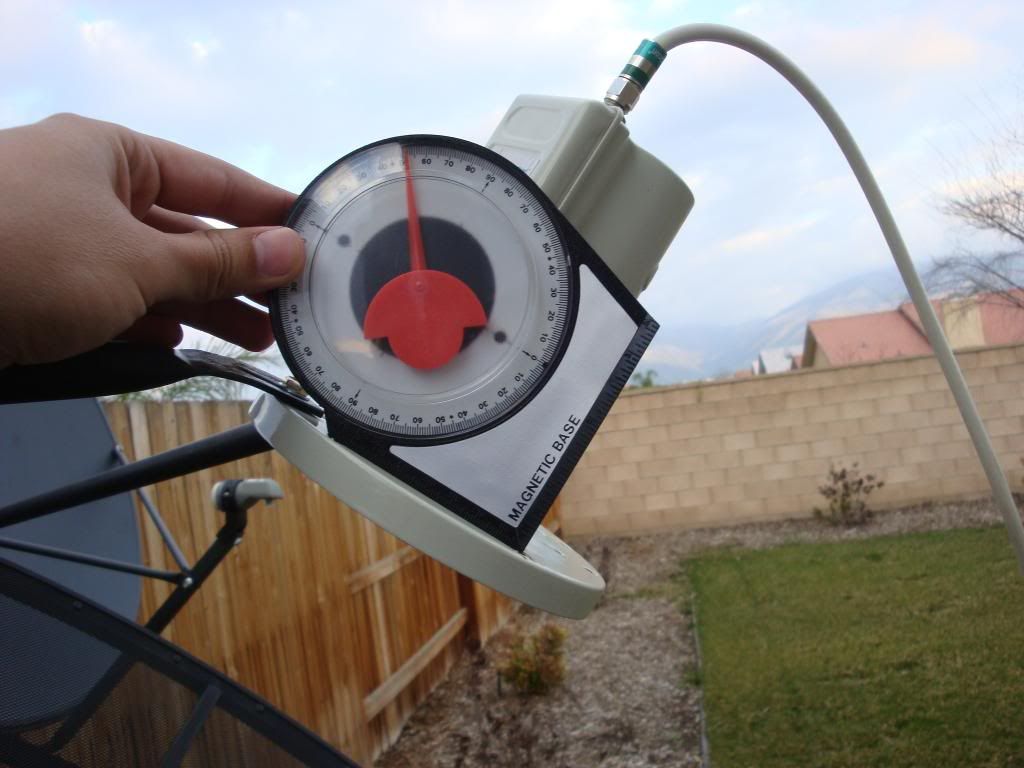Since I had such a hard time finding a clear answer, I thought I'd post instructions on how to set the elevation on a stationary Prime Focus Dish. Unlike the majority of people here, I was trying to set up a stationary dish, and kept getting confused when many of the posts I found kept mentioning Latitude, Southern Most Bird, True South, Declanation, and Total Elevation. If your setting up a stationary dish, FORGET ALL THAT! Assuming you've completed the preliminary steps (i.e. Plumb/Level Mount, unobstructed view of satellite) Do the following;
STEP ONE:
Go Here: Satellite Look Angles Satellite Heading Calculator Azimuth Elevation Skew Tilt LNBF Latitude and Longitude values And type in your information and desired satellite. Write down the DISH SETUP DATA, and head to your stationary dish.
STEP TWO:
Place your inclinometer (zero facing up) on a surface that is parallel with the face of your dish (Rear Support Bracket/Plate, Edge of Dish, Center Face of Dish, Scalar Surface).
STEP THREE:
Elevate dish until inclinometer reading matches that of DISH SETUP DATA for Elevation. THATS IT! You may still have to adjust a little to fine tune your signal, but this will get you in the ballpark.
PICTURE ONE: MY RESULTS FOR SATEMEX 5 ASKED FOR 49° degrees.

PICTURE 2: USING THE FLAT PART OF THE SCALAR, MY INCLINOMETER CONFIRMED MY 49° ELEVATION.

STEP ONE:
Go Here: Satellite Look Angles Satellite Heading Calculator Azimuth Elevation Skew Tilt LNBF Latitude and Longitude values And type in your information and desired satellite. Write down the DISH SETUP DATA, and head to your stationary dish.
STEP TWO:
Place your inclinometer (zero facing up) on a surface that is parallel with the face of your dish (Rear Support Bracket/Plate, Edge of Dish, Center Face of Dish, Scalar Surface).
STEP THREE:
Elevate dish until inclinometer reading matches that of DISH SETUP DATA for Elevation. THATS IT! You may still have to adjust a little to fine tune your signal, but this will get you in the ballpark.
PICTURE ONE: MY RESULTS FOR SATEMEX 5 ASKED FOR 49° degrees.

PICTURE 2: USING THE FLAT PART OF THE SCALAR, MY INCLINOMETER CONFIRMED MY 49° ELEVATION.



